The Age-old Conundrum – Road or Ferry?
Europe’s shores are calling; adventure, culture and a rich tapestry of beautiful scenery awaits. And where better to explore than the delights of Spain and Italy. Whilst perhaps close in their language root, distance between these two European siblings is great. So how is it best to experience these two great nations? How can you best dance between the joys of Spain’s Tapas and Flamenco to Italy’s Gelato and rock villages?
On our travels since March 2016 we have visited both countries and indulged ourselves in their beauty for months at a time. Although the thought of trying to get to each one easefully can be a tricky conundrum for us travellers. Do you go by road or by ferry?
We’ve done both routes and feel that with both experiences under our belt, it’s a good time to share our journeys, the cost comparisons and offer these up to you. Hopefully as a result you can then make your own personal choices.
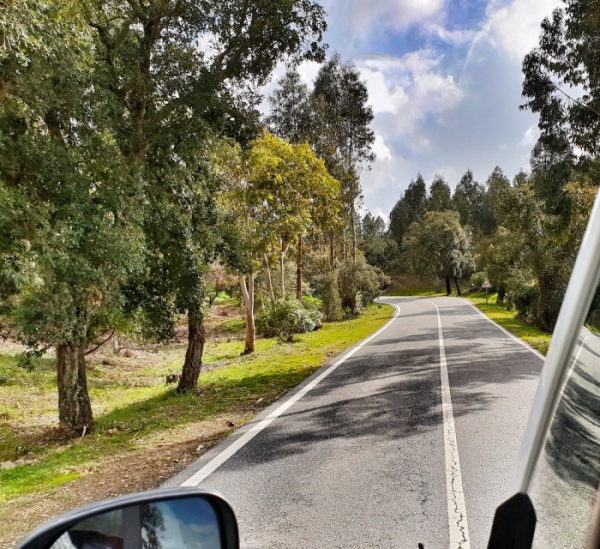
The Road Route
The road route to and from Spain to Italy is surely a beautiful one. Flirting with the edge of the Pyrenees at one side of the continent, through the southern regions of France’s Riviera and skipping into Italy’s Riviera cousin. With such sights along the route as Carcassonne, the Camargue and Provence’s coastal delights it makes the road-trip an easy temptation. And who could resist the joys of baguettes, the regional Pastis and a croissant or two? Crossing the border into Italy gives you a plethora of seaside resorts to enjoy or the tourist magnet of the Cinque Terre, Portofino and Pisa. And so your Italian adventure can begin.
With that in mind, let’s look at the stats and costs of choosing this route.
- It is approx 800 miles from Civitavecchia in Italy to Barcelona in Catalonia.
- That’s a rough cost of £140.00 for diesel, based on 0.17p per mile for a 3.5T motorhome.
- The Tolls through eastern Italy and France can add up depending on how many diversions you take for sightseeing. Allow around £130 for Tolls depending on the class of vehicle you are driving.
- There are potentially two Weighing Station possibilities, both on the France/Italy border and at Perpignan as you head to/from Spain. Whilst we have never been stopped, there are regular stories about campers being taken to the weighing station en route from Spain into France. If you want to avoid this, then the coastal route from Collioure to Roses is an alternative. This will take you an extra hour and an additional 20 miles.
- Depending on your travel philosophy and how many hours/miles you are willing to do in a day, it will take between 3-5 days.
- Meals/drinks for those days need to be built into the cost analysis together with campsites, Aires or services.
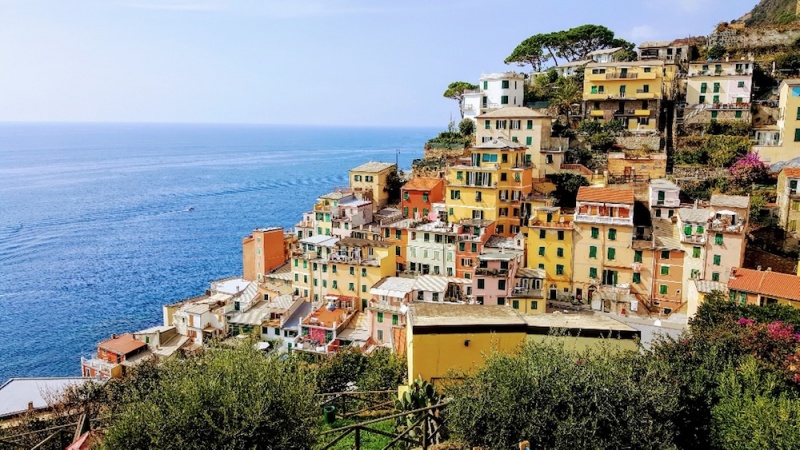
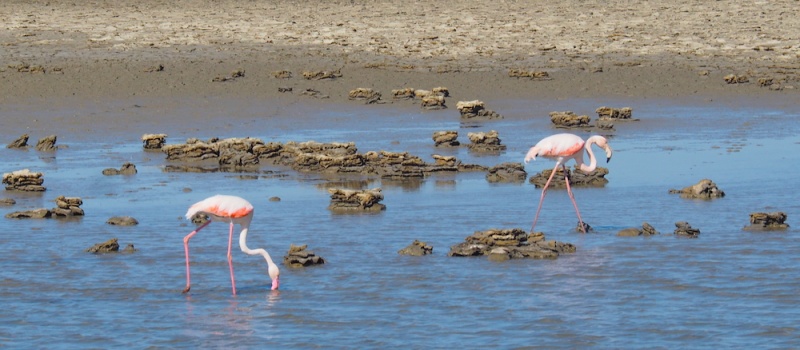
Advantages of the Road Option
- It gives you the chance to explore en route if you don’t know the area.
- Avoids potentially stormy seas of the ferry crossing.
- You can be flexible when you make your journey.
Disadvantages of the Road Option
- Much of the most direct route requires Tolls, many of which are nigh on impossible to avoid, can be tricky to navigate and can add to your stress, time and mileage. And the costs do add up.
- You need to build in the wear and tear on your vehicle, tyres in particular.
- There is a risk of being stopped at the Borders for weight checks.
- Places to stay alongside the motorway are limited and not recommended so a diversion into the towns are required, adding further to time, mileage and costs.
- If you are travelling in the winter heading from Italy to Spain for some sunshine, then most of the campsites will be shut, so you are reliant on Aires, wild camping and Sostas.
- You are at the mercy of bad weather conditions and accidents.
- The road quality in the north-west regions of Italy are particularly low quality.
- You have the Genoa issue to navigate following the collapse of the bridge in August 2018 that carries the main arterial motorway.
- If you are travelling in winter, then weather conditions and potentially snow around the Pyrenees are a factor to consider. Also in Italy, from 15 November, winter tyres are recommended and snow chains are compulsory so, if like us, you only have snow socks for your summer tyres, then the ferry is a strong contender.
Total cost for Road = minimum of £300 excluding campsites, Aire fees and the wear and tear apportionment.
The Ferry Route
From Baracelona to Civitavecchia, just north of Rome is a 20 hour sailing leaving at night between 2000 and 2300 respectively. So for 7 hours of the journey you are asleep. The boats are cruise ship size vessels from Grimaldi Lines and whilst not the quality of a cruise liner, it does what it says on the tin. The boats for summer trips have a swimming pool and sun loungers and for other season, a Well-being centre, restaurants and bars. With plenty of cabins available you have your own private space and toilet/shower facilities. Or you can choose a reclining seat in a private lounge.
Here are the costs for the ferry option;
- Based on an April 2017 from Barcelona the cost was £356.00 and a November 2019 sailing from Civitavecchia was £349.00. Both ferries included a cabin and were booked online with Directferries which was a lot cheaper than going direct to Grimaldi Lines.
- There is also a route from Genoa and Savona to Barcelona obviously depending which part of Italy you are travelling from or to and they are slightly cheaper by about £50. So it might make more sense to take this ferry if you are in the northern regions of Italy than to drive down to Civitavecchia.
- Prices are based on the size of your vehicle <6m and from 6m-9m.
- Allow for Breakfast, Lunch and refreshments whilst on board, prices of which average £17pp for the trip.
- You can reserve a reclining seat for £5 or a cabin for £80. Bear in mind that if you pay for a cabin when onboard, it will cost you £10 more than if you reserve it on line.
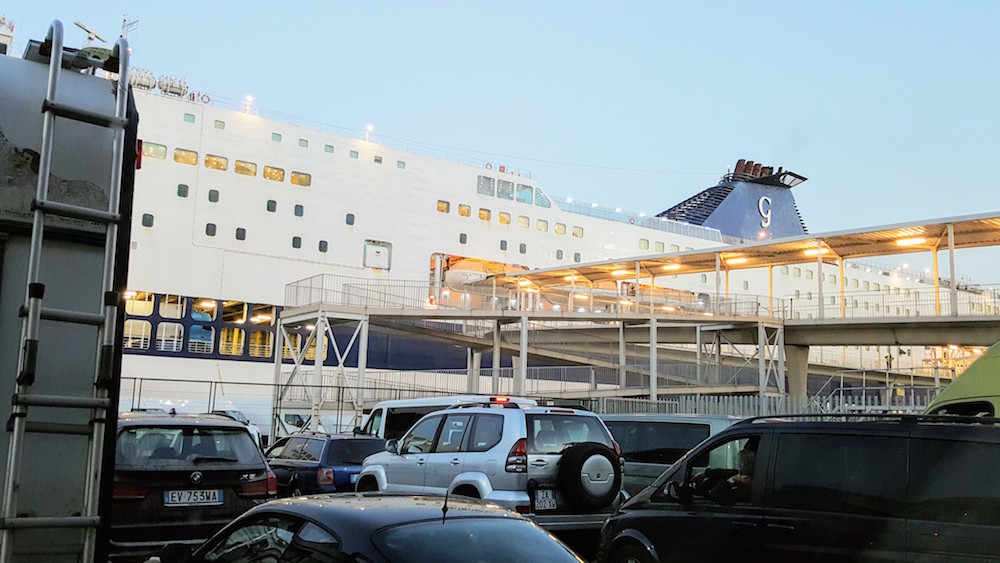
Advantages of the Ferry
- It is much quicker than the 3-5 days it takes to drive. With the overnight boat, 2/3rds of your journey is done by the time morning arrives.
- It saves on the wear and tear of your vehicle. The 800 miles direct route by road accounts for around 5% of your tyres’ lifespan. So this does need to be built in, mentally at least.
- With a night time schedule, no accommodation the night before is required, so you can travel directly to the ferry, ensuring you check in 120 minutes before the sailing.
- If you order a cabin you can have unlimited showers with piping hot water!
- Dogs are allowed on the ferry, with either Kennels or Pet Friendly cabins.
Disadvantages of the Ferry
- The weather is unpredictable, so stormy seas are a factor https://www.instagram.com/ especially during the winter, causing potential sea-sickness if you are prone.
- The food quality is not great and is expensive.
- If it is busy then embarkation and disembarkation can take time.
- The schedule is always open to disruption from operational issues. Although unless it is cancelled you are still across the Mediterranean within 24 hours.
- It’s never a great quality sleep on a boat.
- On exiting the ferry, a wrong turn could have you in Barcelona’s Low Emission Zone, which without a sticker could be an expensive fine. Although sticking to the outer ring road is not in the city zone.
- If you time your crossing over a half-term, there is a risk of school children crossing to or returning from a trip to Rome or Barcelona. This happened to us on our first crossing in March 2017 and it was not pleasant given their teachers were all sitting in the bar having a fine old time.
Total cost for the ferry = £385.00 with no additional extras
Conclusions
A significant part of our decision about the ferry versus the road is about time rather than costs. As you can see there’s not a huge amount in it, once you factor in the Road Option’s hidden and unexpected costs. For us the speed and efficiency of the ferry far outweighs the road. We all know that travel is tiring and to cut off potentially 3 days travel time is worth doing, in our book. Although of course it is a personal choice based on your individual circumstances and also where your start or end point is in Italy.
If you have no time constraints and the seasons are in your favour, then the road has some huge sightseeing benefits. For autumn and winter, then the ferry is far more appealing. The choice is yours!
We hope that this has been helpful in working through the options for you with some stats and facts.
Pin for later….

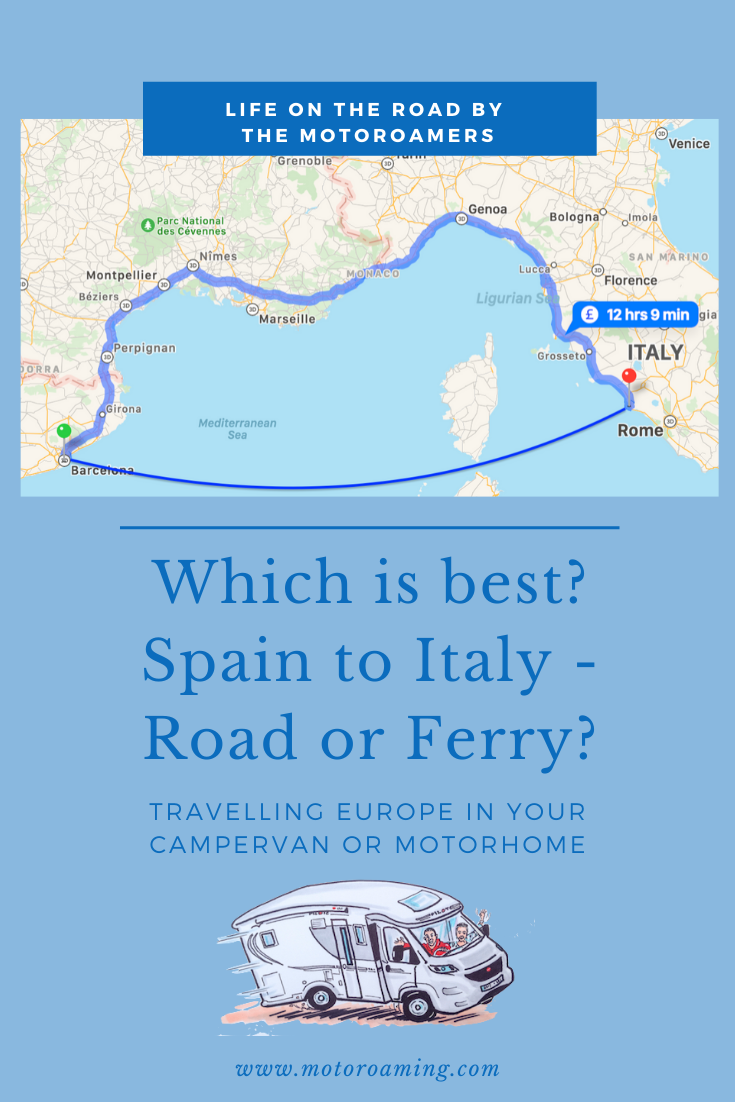

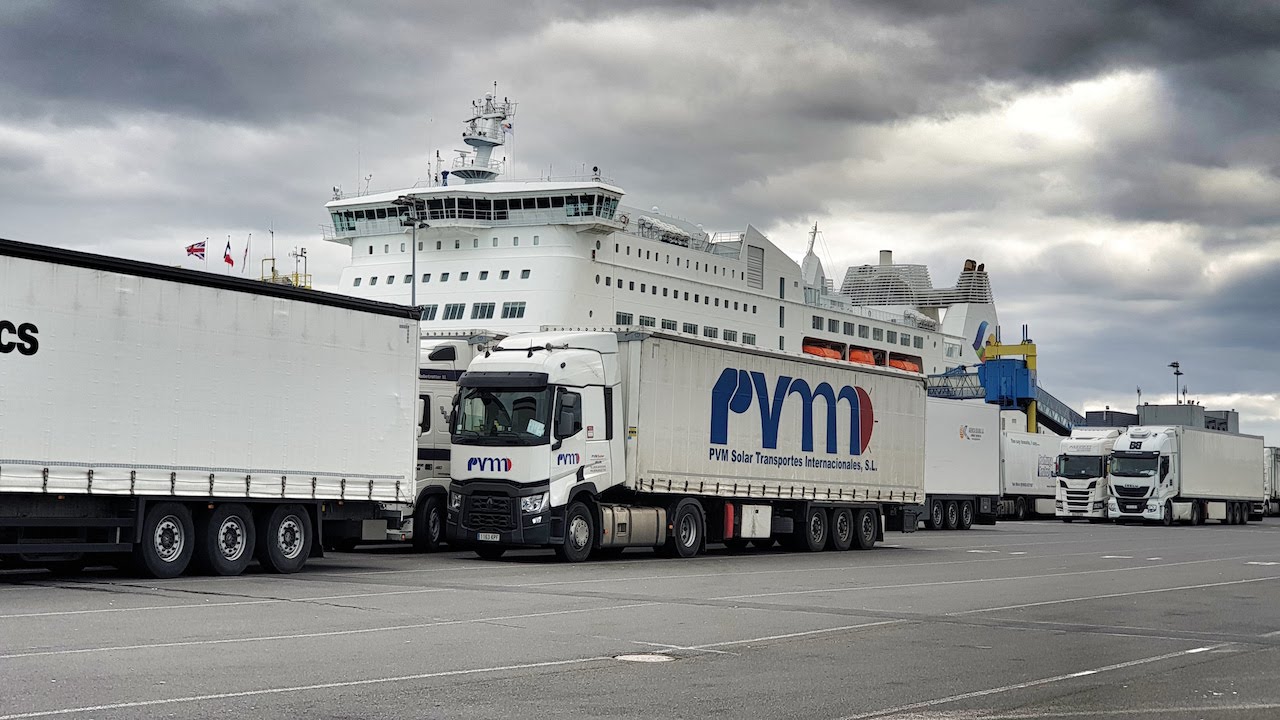
If it was me traveling at this time of year I would choose the road and take to the hills for a bit of snow sports before heading for the warmth of Spain. Alpes have opened up lots of resorts already
Hi Bish, I think the road is perfect if you have a love for winter sports. If not the ferry is great. Kx
Another great article. Many thanks for opening our eyes to this option. I don’t usually take into account vehicle wear and tear. This will make me think.
Thank you Trevor. I think it is an important factor to the decision. Kx
Very interesting article and food for thought.
We have travelled the full length of Italy and Spain but have never considered the ferry option. We are currently in Spain. Thank you. Safe travels. Richard
Hi Richard, thank you. Ferry is certainly a good option under certain conditions. Kx
After reading this, I want to travel aboard so bad!
And I hope you are able to very soon.